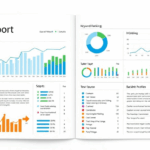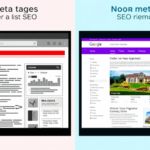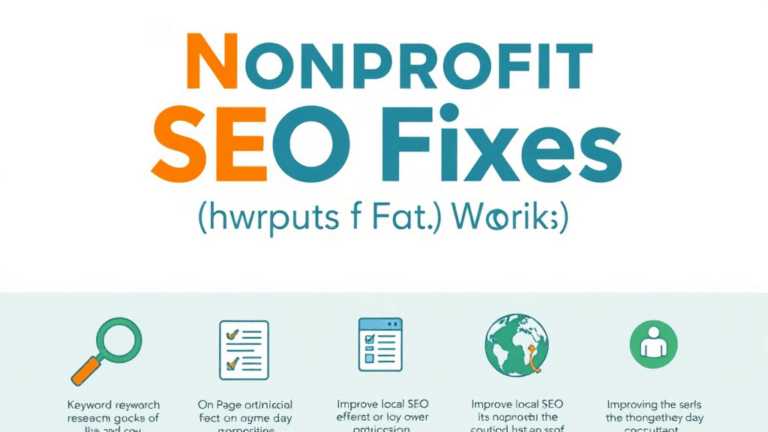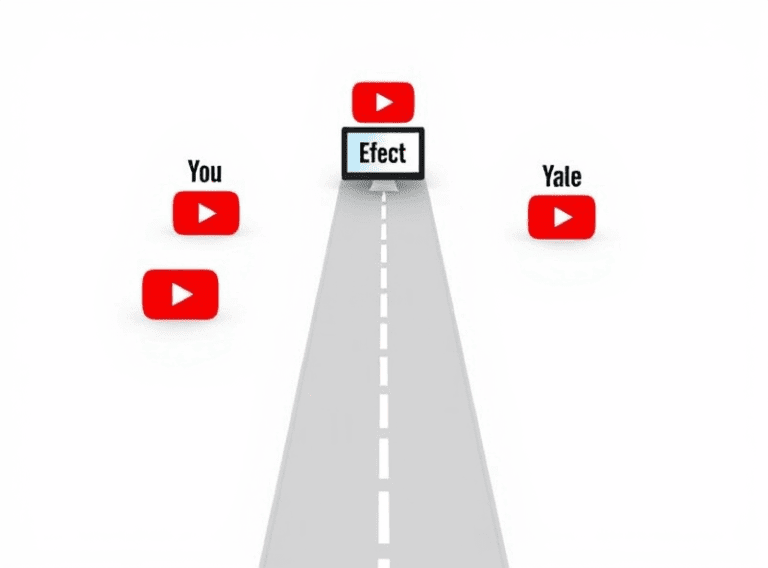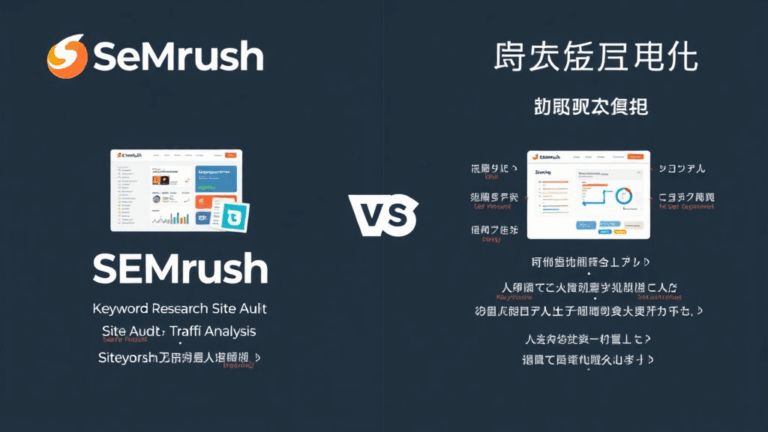How Domain Authority Actually Affects Google Rankings
Domain Authority Is Not a Google Metric (and Never Was)
Let’s get this out of the way: Domain Authority (DA) is Moz’s metric, not Google’s. It’s an educated guess, not a ranking signal. And yet somehow, clients email me spreadsheets obsessing over it like it’s a credit score. I once had a real estate SaaS client who would CC everyone on weekly rank reports where the only column highlighted was their site’s DA moving from 41 to 43. Zero clicks came from the new pages, but they felt like they were winning.
Google reps have said it repeatedly — they don’t use DA. They do look at things like PageRank (still in use), link quality, topical relevance, and site reputation in context. But there is no single “domain score” used as a blanket filter. It’s not real. It’s useful only as a squishy comparison tool, like judging someone’s gym gains by how tight their sleeves look.
In practice, changes in Moz DA (or Ahrefs DR or SEMrush Authority Score) tend to follow site reality, not generate it. If your site’s holistically improving (better content, stronger links, tighter site architecture), those metrics rise along with rankings. But not because of them.
Backlink Quantity Isn’t the Problem — It’s Link Neighborhoods
Years ago, I bulk purchased syndicated “guest posts” through a lazy outreach service that got me hundreds of links from auto-generated lifestyle blogs. Every domain had a DA over 30. Rankings didn’t budge. A few pages eventually dropped. Turns out, it wasn’t the number or even the anchor text that blew up — it was the link neighborhoods. Most of those domains linked to every e-comm outfit that paid them $70. Google spotted the pattern, and trust dropped across the board.
DA doesn’t show you any of that. It doesn’t flag when a domain shares 85% of its outbound links with known payday loan affiliates. You’ve got to actually look at where your backlinks are sitting — same niche blogs written by real humans? Or synthetic media farms with a closet full of AI-generated template content?
“Every site exists in a neighborhood. Google looks at the neighbors.”
When Low-DA Sites Outrank High-DA Ones (and Why That’s Happening More)
This is where the DA house of cards starts wobbling. I’ve 100% seen brand-new blogs with DA under 10 outrank institutional domains sitting pretty at 80+. It usually happens on long-tail commercial queries or intent-specific question keywords like “how to reset ecobee3 after power outage.”
What’s going on? Relevance. Freshness. Internal linking. Page-level authority. Those are the movers here. Google’s system does more with less now — small, clean sites without crawl-waste or bloat can punch above their weight if their targeting and linking structure are surgically precise.
- Write extremely focused content (one clear question, one angle)
- Use internal links that actually pass topical relevance, not just vague navigation
- Trim or noindex low-performing pages instead of keeping everything indexed
- Match title and H1 structure to the query intent
- Watch crawl budget — especially on small business CMS platforms
- Add structured data where appropriate (but don’t chase rich snippets mindlessly)
Once the smaller sites get a few utility-driven referral backlinks (like someone linking it from a Reddit thread or niche forum), a single page can comfortably defy the DA hierarchy.
Internal Backlinking Weight Matters More Than We Thought
One of those weird edge cases: I noticed a client’s new blog post ranked better before we linked to it from the homepage. It dipped about 4 spots within a week of adding that internal link. Turns out the surrounding links on the homepage were all product or pricing pages, and from Google’s POV, we just blobbed that new blog post into a conversion-focused silo. Relevance got murky — the post was informational.
Reworking internal linking strategy (hubs funneling to spokes, context-heavy versus boilerplate links) had way more impact than any third-party DA adjustment. And none of that shows up in Moz metrics.
internal_link_profile.json:
{
"/blog/privacy-budgeting": ["/blog/gdpr-vs-ccpa", "/guides/data-policies"],
"/product-tour": ["/pricing", "/signup"]
}
Pages “inherit” visibility in part from their on-site connections. Keep utility sections tight. Don’t junk everything onto every nav. Googlebot reads structure like an ant colony reads pheromone paths.
Expired Domains With High DA Often Backfire
This one burnt me. I bought an old .com with a DA over 50, thinking I’d rebuild it into a legit content hub and use 301s to funnel to my main site. Looked clean — old outreach site in the home automation niche. But the previous webmaster had redirected it three times in five years. When I claimed it, Google wouldn’t let half the pages even index, much less rank. Guess their algorithm still had some legacy signals lingering deeper than the DA surface told me.
Small clue that tipped me off: when I ran it through the Index Coverage report, tons of URLs showed: “Crawled – currently not indexed.” No manual action. No penalty. Just no love. Eventually I let the domain go.
Things a High DA Domain Won’t Tell You:
- Whether it has spammy redirect history
- How Google perceives its content origin freshness
- Actual crawl-to-index rate
- User engagement or pogo-sticking behavior
- Whether topical authority is React AI tutorials or men’s health gummies (or both)
DA Drift Happens — And Can Cause Panic for No Valid Reason
I had a publisher friend text me mid-week: “DA dropped 7 points. Did something get hacked?” Nope. Moz updated their algorithm. That’s it. They roll changes to the way they calculate authority, and when they reindex link graphs, your numbers can change overnight. This happens with Ahrefs too. Nothing’s broken, nothing’s penalized — just the yardstick moving.
If you’re watching DA as some kind of rankings proxy, this can be catastrophic until you realize it’s just a recalibration. Your actual Google rankings stay steady. But your boss is suddenly in your Slack wondering if the SEO vendor’s asleep at the wheel. Fun.
Google’s Trust Signals Don’t Map Neatly to Domains
There’s a messy truth under all of this: Google doesn’t think in “domains” the way we do. They think in entities, relationships, behavior. It’s possible for one part of your site to have high trust and another to be ignored. Your product documentation may rank better than your blog, or vice versa. Pagerank has always flowed as a page-level thing. DA tries to flatten that into an average, but… averages lie.
True SEO strength exists in clusters:
- Pages that earn consistent backlinks over time (not all at once)
- Sections that maintain crawl health and avoid index bloat
- Content themes that net user stickiness (low bounce, repeat visits)
- Micro-relevance between page-level anchor text and destination topics
Think like a mesh network, not a monolith. One strong homepage can’t drag fifteen zombie blog categories up the SERPs — but four solid cornerstone articles cleanly interlinking might give you more lift than an entire press room ever did.
Stop Reporting DA to Stakeholders — Use Real Metrics Instead
I once saw an investor deck where one of the bullet points was: “Organic reach backed by DA 72 domain.” What does that even prove? That you bought some backlinks in 2016 and never disavowed them?
Internally, DA should be replaced with metrics that tie directly to visibility or user interaction:
- Impressions and clicks from GSC
- Page indexing rate over 90 days
- Query-to-click match (CTR per URL)
- Average position trend by URL cluster
Those give you a real heatmap of performance. DA just flatters or frightens your domain’s ego.


